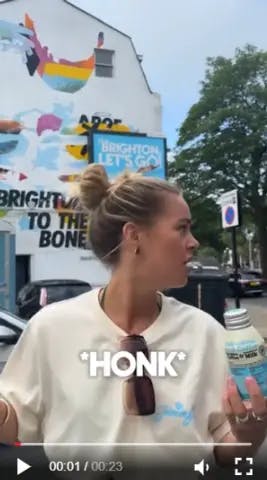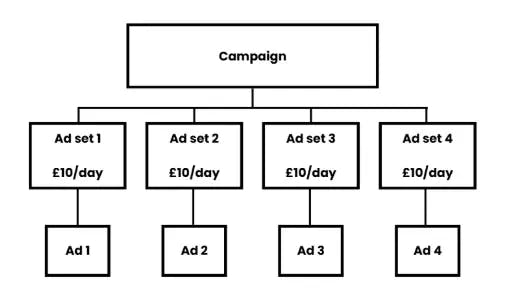An Agency Guide to Successful Meta Ad Creatives

By Archie Court
Visit profileMeta Ads remains one of the most powerful platforms for raising awareness, driving traffic, and generating sales. Meta delivers your message to the right people, with over 3.5 billion users across Facebook, Instagram, and Threads, and powerful targeting options to match. But as Meta’s algorithm becomes more automated, ad creative has arguably become the single biggest factor in success.
Why Ad Creatives matter
Meta’s algorithm has evolved dramatically. Once, precise audience targeting was everything. Now, Meta encourages broader targeting, allowing its machine learning to identify high-performing audiences for you.
This shift means Creative is at the helm. Strong Creative is now the difference between a scroll-past and a click. As many marketers put it: “Creative is the new targeting.”
How to make a good Meta Ad Creative
In order to understand how to create the best Meta Ad Creatives, first it helps to understand audience behaviour.
Why do people buy from ads?
Behind the offer itself, the biggest driver of ad performance is Creative. It’s what grabs attention and stops the scroll. To catch attention, you need to think about why people would stop and click on your ad. Typically, users are driven by one or more of the following:
- Solve a problem
- Save time/effort
- Gain or express social status
- Feel good about themselves (retail therapy, self-care, reward)
How to Find What Your Audience Wants
To uncover these motivations and shape your messaging accordingly, use the following techniques:
- Customer reviews: Read reviews of your product or your competitors’ products. What do people love? What frustrates them? This reveals both the benefits that resonate and the pain points you can address.


- Competitor ad analysis: Use the Meta Ads Library to see what messaging your competitors are using. Are there areas they’ve missed? Is there a gap you can fill to differentiate your brand?
- Keyword research: Explore what people are searching for related to your product or their problems. This can help you understand demand, variations in search intent, and potential messaging angles based on real user language.
Together, these methods give you deep insight into your audience’s wants, challenges, and expectations using their own words
Applying this to messaging
Once you’ve gathered audience insights, here’s how to use them effectively:
- Speak your customers language: Use the exact words and phrases customers use in reviews or forums, not just of your product, but of similar ones in the category. Look for recurring pain points or phrases that come up across different reviews. This shows empathy and positions your product as a solution to relatable, common problems.
For example, noise cancelling headphones:

Our copy using this pain point can be: “We’ve all had headphones that sound amazing… until your ears start hurting. Ours are so comfortable, you’ll forget you’re wearing them.”
- Highlight real benefits: Look for recurring themes in positive reviews. If customers consistently praise a specific feature or outcome, lean into that in your messaging, it’s likely to resonate with others too.
How to Build Creatives for Ads
Whilst there’s no one-size-fits-all approach to ad creative, following these tips can bring you closer to what works best.
The Hook
People scroll quickly, your goal is to stop the scroll.
To do this, you need to include a strong hook that captures attention within the first 3 seconds, otherwise you will lose the user.
Visual hooks examples:
- Question: Have a person or voiceover ask a question to the user.
- Pain point: Show a video or image of the pain point the user may have with a big ❌ over it.
- Fast paced intro: Zoom in or turn the camera quickly to the subject of the ad.

Jimmy’s Iced Coffee uses this tactic brilliantly, with a car honking at the person on screen in the first second, it instantly grabs your attention and keeps you watching to see what happens next. You can watch the ad in the TikTok Creative Library.
Text Hook examples can look like:
- Do you ever… then this is for you…
- Here’s the secret to…
- Are you struggling with…
- Here’s how I got… in [timeframe]…
- Did you know…
Send the users eyes to the correct locations
- Position your text next to the product so users can get information quickly without shifting focus.
- Faces attract attention first, so place the product next to the face or have the person’s eyes look towards the product to subtly guide the viewer.
- Avoid animated stickers, they're often hard to read and can distract from the product.
- Use arrows to guide the viewer’s eye toward important elements like the product or key message.
- Stage the product in unusual ways to stand out.
- Be selective with visual emphasis, if everything is highlighted (product, text, background objects, logos), then nothing stands out. Keep the focus on what is important.
Make it clear what the ad is for
It’s not just about grabbing attention, you need to make it immediately clear what your product or service is. Users who think the ad isn't for them won’t stick around. A strong intro paired with clear branding and benefit-led messaging makes a winning combo.
Testing Meta Creatives
All of the tips above are valuable, but nothing beats real-world testing. What works for one business might not work for another, and assumptions can quickly lead to wasted budget.
Creative testing should be a continuous process, helping you to stay ahead of trends and find what truly resonates with your audience.
You should test all variables in your ads, including:
- Creative formats (video, static, carousel)
- Copy (headlines, hooks, CTAs)
- Audiences (broad vs interests, lookalikes, audience signals)
- Placements (Facebook feed, Instagram reels, etc)
A good setup to test creative can be:
- Set up a campaign using ABO, this ensures each ad gets an equal chance.
- Create multiple ad sets with identical settings: same audience, placements, budget, and schedule.
- Place one unique ad in each ad set.
- Let the ads run until you have enough meaningful data.
- Pick the winner based on your key metric (e.g. CTR, CPA, ROAS).
- Repeat the test, keep your top performer and test it against new creative variations.

Summary
As Meta’s algorithm shifts more control to machine learning, ad creative has become your most powerful factor for performance. By understanding what truly motivates your audience, and reflecting their real pain points and positive experiences, you can create ads that stop the scroll and drive action.
There’s no perfect formula, but with audience insights, smart creative structure, and ongoing testing, you’ll consistently improve performance.
Want better results from Meta Ads?